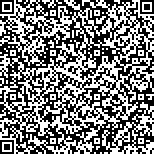下载中心
优秀审稿专家
优秀论文
相关链接
摘要

地表温度是水文、气象、气候和环境等研究领域中的关键参数,利用热红外遥感可快速获取区域和全球高精度的地表温度数据。Himawari 8号是日本发射的新一代地球静止轨道气象卫星,星上搭载AHI (Advanced Himawari Imager)成像仪,具有更高的时空分辨率。利用AHI第14 (11.2 μm)和15 (12.35 μm)通道星上亮温数据,提出反演地表温度的实用劈窗算法,其中输入的发射率数据利用ASTER GED (Global Emissivity Dataset) v4计算得到。劈窗算法的系数由观测角度和大气水汽含量分区决定,其中大气水汽含量由两个劈窗通道直接估算得到。利用黑河流域生态—水文过程综合遥感观测联合试验(HiWATER) 4个站点的实测数据和中国7个湖泊中心点的MODIS地表温度产品对反演结果进行验证,结果表明,算法的均方根误差(RMSE)在3 K以内,达到目前常用遥感地表温度产品的精度。同时与利用MOD11C3 C6产品估算的发射率和温度反演结果进行对比分析,发现ASTER GED反演的结果具有更高的精度,适合用来生产高精度的地表温度产品。
Land Surface Temperature (LST) is a key parameter for hydrological, meteorological, climatological, and environmental research fields. Accurate regional and global LST products can be obtained from thermal infrared remote sensing data. Himawari-8 is the next-generation of Japan geostationary meteorological satellite, which carries a new optical sensor called Advanced Himawari Imager (AHI), with significantly higher temporal and spatial resolutions. AHI has 16 observation bands, with spatial resolutions of 0.5 or 1 km for visible and near-infrared bands and 2 km for infrared bands. AHI can provide full disk images every 10 minutes, and can provide high temporal and spatial resolution LST information for many studies. The bands 14 and 15 of AHI can be used for LST retrieval by using the Split-Window (SW) algorithm. Thus, the objective of this paper is to propose a practical SW algorithm to retrieve LST from AHI data. Land Surface Emissivity (LSE) is one of the essential parameters for SW algorithm. SW algorithm is extremely sensitive to emissivity errors, and the sensitivity is significantly higher for direr atmospheres. A 0.005 error in emissivity will result in a LST error of 1 K or more under drier conditions. The ASTER Global Emissivity Dataset (GED) version 4 was adopted to calculate the LSE in this paper to improve the accuracy of emissivity in barren surfaces.
The refined Generalized Split-Window (GSW) algorithm developed for MODIS was adopted to retrieve LST from the brightness temperature of AHI bands 14 and 15. MODTRAN 5.2, TIGR 3 atmospheric profile database, and ASTER spectral library data were used to create a simulation database to obtain the coefficients of the GSW algorithm. The coefficients were determined based on view zenith angle and atmospheric Water Vapor (WV) sub-ranges to improve the accuracy, and the WV was directly calculated using a simple method based on the brightness temperature of AHI bands 14 and 15. Two kinds of emissivity products were used to calculate LSE for AHI bands 14 and 15. The first product is the ASTER GED version 4 monthly product. The second is the MODIS MOD11C3 version 6 monthly emissivity product. The spatial resolution of the two products is 0.05°.
Ground measurements collected from three Aerosol Robotic NETwork (AERONET) sites were used to validate the WV result. The root mean square errors (RMSEs) were 1.16 g/cm2, 0.94 g/cm2, and 1.23 g/cm2 for Baotou, Beijing-CAMS, and Hong_Kong_PolyU sites, respectively. The 2079 daytime and 2983 nighttime scenes of AHI images between June 1, 2015 and December 29, 2015 were used for LST retrieval. Ground LST measurements collected from four Heihe Watershed Allied Telemetry Experimental Research (HiWATER) sites and MODIS LST product data of the central points of seven lakes were used to validate the LST. The results show that the proposed algorithm demonstrates a reasonable accuracy, with RMSE less than 3 K, which has a comparable accuracy of current remote sensing LST products, such as MODIS, VⅡRS, and FY-3B VIRR LST products. For LSE, ASTER GED v4 provides more realistic values of surface emissivity than MOD11C3 v6 because the emissivities are in accordance with the seasonal variation on NDVI. The MOD11C3 v6 typically provides constant values of emissivity, which was overestimated over the JCHM site. Thus, the LST was underestimated due to the overestimation of the emissivity.
A practical SW algorithm for estimating land surface temperature from Himawari 8 AHI data was proposed based on GSW algorithm. ASTER GED v4 product was introduced to estimate the LSE for GSW algorithm. The LST result was evaluated with ground LST measurements collected in four HiWATER sites and the MODIS LST products, with RMSE of less than 3 K. The results also show that ASTER GED v4 product has higher accuracy than MOD11C3 v6 product in our study sites; thus, is more suitable in generating high accuracy LST product.

